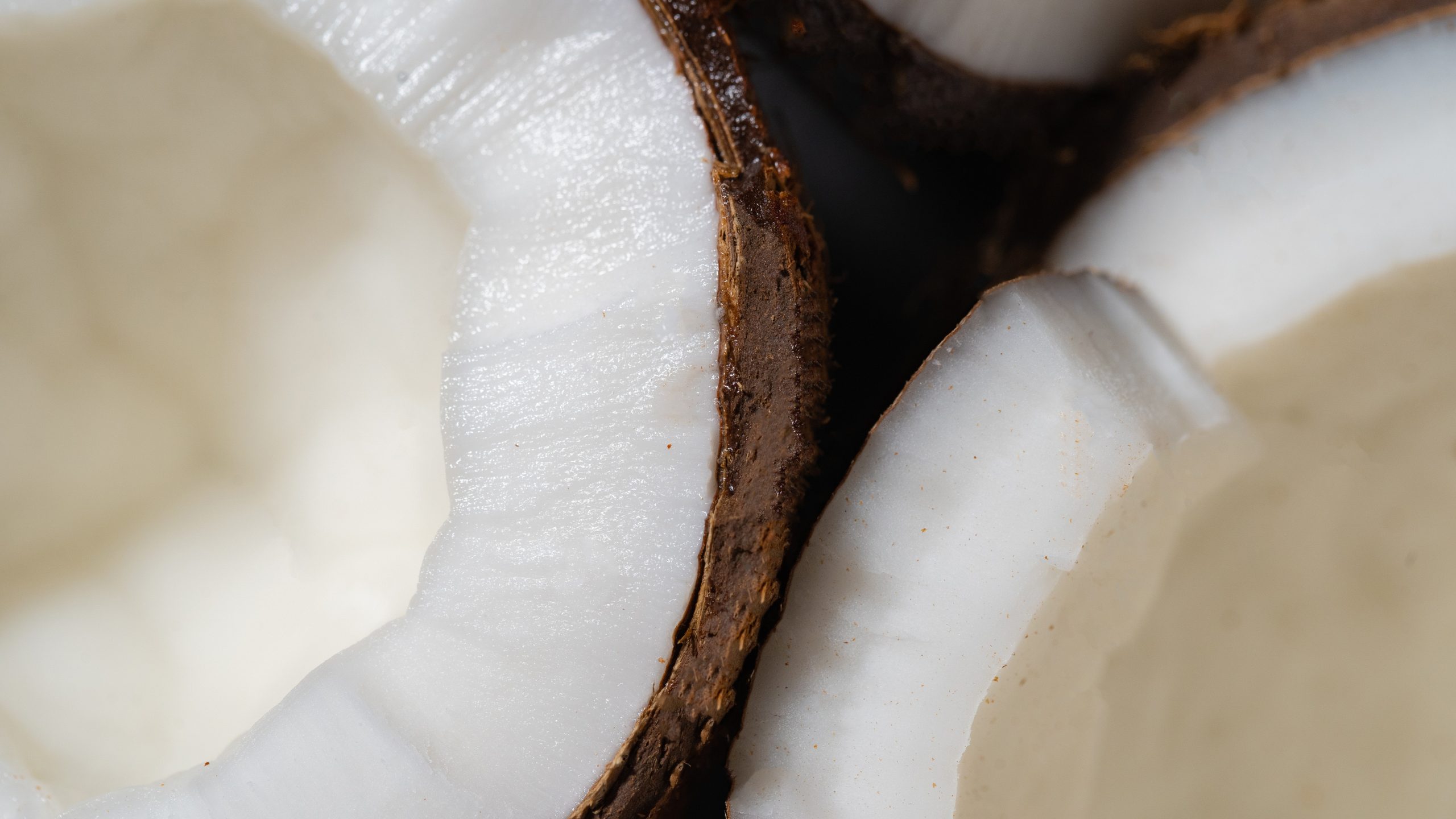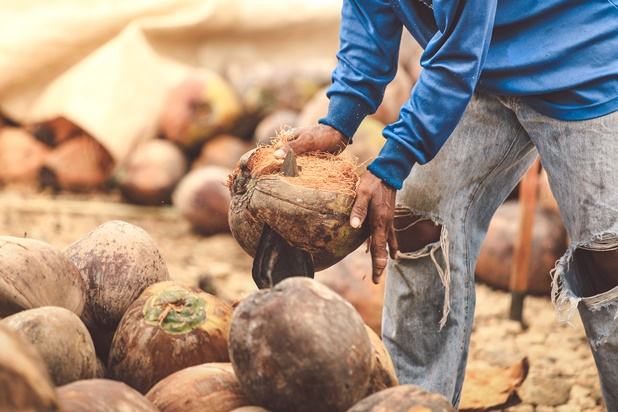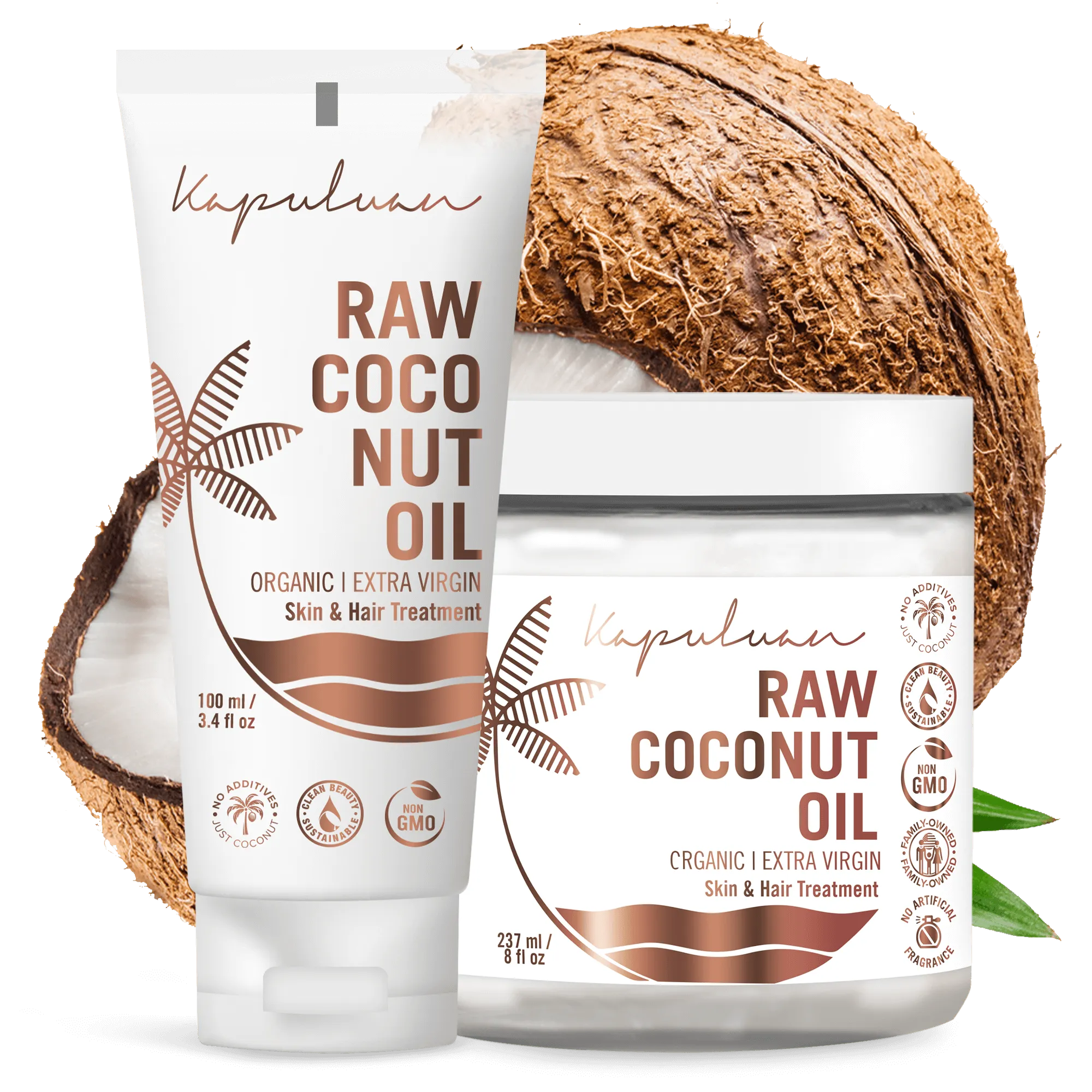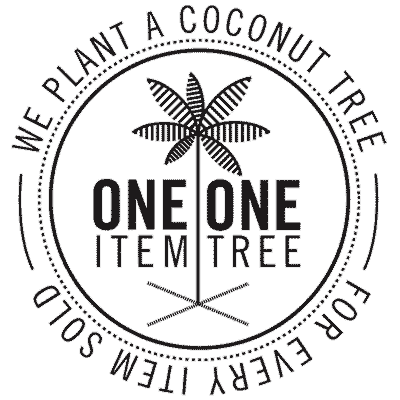Last Updated on October 7, 2024 by adeela

What is copra?
Copra refers to sun-dried or smoked coconut “meat” “flesh”, or the edible part of a coconut. For as long as the industrialization of coconut, smoked or sun-dried coconut “meat” has been extracted to make a very low-value commodity called copra.
Since industrialization, each valuable fruit of nature man has discovered has been used for different purposes in a variety of ways. Among them, coconut particularly has a very long history of use in its natural and processed form.
As a whole, the coconut comprises four parts:



 The idyllic coconut palm setting may be extraordinary, but the industrialization of this magnificent “tree of life” has a troubled history, responsible for over 60 percent of the Filipino coconut farming community living in extreme poverty. Their existence producing copra at the terminal end of the coconut distribution chain often leaves entire communities hopeless.
Our goal is to improve the well-being of impoverished coconut farming communities through the production of the finest quality handmade coconut oil. We strive to contribute to the long-term success and wellness of the Philippines. Check out Kapuluan’s short documentary film, “Kinabuhi” to see what these farmers go through (available below).
By planting new coconut palms, we help coconut farmers rebound from the destruction of typhoons and increase the Philippines’ high potential to mitigate global warming, specifically carbon emissions. We aim to show the importance of buying fair trade products made using sustainable sources and ethical production practices.
The idyllic coconut palm setting may be extraordinary, but the industrialization of this magnificent “tree of life” has a troubled history, responsible for over 60 percent of the Filipino coconut farming community living in extreme poverty. Their existence producing copra at the terminal end of the coconut distribution chain often leaves entire communities hopeless.
Our goal is to improve the well-being of impoverished coconut farming communities through the production of the finest quality handmade coconut oil. We strive to contribute to the long-term success and wellness of the Philippines. Check out Kapuluan’s short documentary film, “Kinabuhi” to see what these farmers go through (available below).
By planting new coconut palms, we help coconut farmers rebound from the destruction of typhoons and increase the Philippines’ high potential to mitigate global warming, specifically carbon emissions. We aim to show the importance of buying fair trade products made using sustainable sources and ethical production practices.
- The husk – made up of coir
- The shell – the brown hairy-like shell we recognize the coconut by
- The flesh – the edible part known as the coconut “meat”
- Coconut water – inside the coconut
What is Copra Used For?
Copra is mainly used to yield coconut oil. However, the byproducts themselves are used for additional purposes, mostly as food for livestock. For the coconut meat to become copra, it goes through a drying process over the course of a few days. After removing the shell, the coconut is broken open, the coconut water is drained out, and the coconut meat is left to dry. The copra can be made by sun drying, smoke drying, or kiln drying. Then, the drying process happens where the coconut palms grow. These areas are highly suitable for the process as they are hot and humid in climate. In today’s world, naturally growing coconut palms remain a great source of copra. But the commercial plantations reign superior. Regardless of the source, once the copra is finally dry and ready, it is transported to industrial oil mills for processing. The copra mills resemble sugar crushing mills, and the process itself remains very similar to that found in the sugar mills.
Copra-Produced Coconut Butter
The processing of the dried copra starts with cutting the copra pieces into chunks. The chunks are then shredded through a press. By repeating the process, the shredded chunks finally transform into a buttery consistency. Coconut butter is widely used in many circumstances today. It mostly acts as a replacement for dairy products in baking and raw foods. But it also finds its use in the manufacturing of many cosmetic products for its excellent moisturizing properties. Some of these products include soaps, body scrubs, hair masks, shampoos, topical creams, etc.Copra-Produced Coconut Oil
The same process used to produce coconut butter is the same to produce oil. The process of copra sent through a press repeatedly extends to a point where the oil becomes extracted from the butter. The oil from this process is used for cooking and for manufacturing several cosmetic products. The coconut oil derived from copra is smoky and can be rancid. To make the oil appear clear and odorless, manufacturers often use strong chemicals to bleach and clean the oil. This results in a toxic and harmful product. The process removes the natural compounds and antioxidants that give pure coconut oil its unique flavor, aroma, and beneficial properties.What is Copra Meal
After extracting the oil from the copra, the leftover residue is called copra meal or copra cake. This coconut waste is a useful byproduct, mostly used as food for livestock. As with many other types of residue, copra residue acts as cheap feed for livestock. The copra meal provides a source of high-quality protein for horses, pigs, sheep, deer, and fish, benefitting the animals in multiple ways. For example, copra is the primary product in horse feed as it is said to improve skin texture, and body conditions, and results in shiny skin and horsehair. Copra also increases the growth rate of pigs and poultry. For fish, soaked copra meal is used as regular feed. Copra cake is around 18 – 25% protein. But, it contains so much dietary fiber that it cannot be eaten in large quantities by humans.Are Copra-Derived Products Safe?
Large industrial mills transport dried copra to process CNO (Coconut Oil) for commodity markets. However, If the drying or transportation process takes too long, mold or bacterial growth occurs, which leads to rancidity. Sterilization from commercial refinement uses noxious chemicals. High pressures remove nutritive antioxidants and other beneficial components of the coconut. This alters a highly nutritious and natural product into something of lesser quality. CNO can be found in many products and it is listed as coconut oil. This includes lotions, shampoo, conditioner, soaps and detergents, cooking oil, and medications for abrasions, skin rashes, and burns. If you prefer avoiding this lower-quality product, make sure you find products made with fair trade virgin or raw coconut oil.
The Journey of Copra
For valuable coconut products to come into our households in their familiar form and in fancy packaging as ready-to-use products, they pass a very long and interesting journey. Most of the coconut-derived products we use come directly from copra. It is a cheaper source for the production of coconut-based goods. Coconuts grow on coconut palm trees with an approximate height of 60 to 80 feet. The biggest and most abundant amount of wild coconuts is found in remote villages scattered across Asia and the Pacific. Commercial plantations also grow coconut trees for large amounts of copra. Villagers and coconut farmers first gather coconuts that have fallen on the ground. Then, they climb on the top of the palm trees to harvest more coconuts. They put them in handmade sacks carried on their backs and transport them to the sun-exposed spot for drying. They crack open each of the coconuts, and by using primitive tools, take the kernel out to dry. The coconut meat is usually dried on a rack exposed to the sun or over a fire (copra smokers), which helps speed up the drying process of the coconut “meat”.
From Tree to Mill
Sometimes, it takes several months before the villagers can get their bags of smoked copra to the district center that has a harbor and copra traders/buyers. The final point of their distribution (the mills) is usually situated miles away from their village. After drying, the copra is stuffed into improvised sacks. These sacks weigh around 170 pounds and are transported on the back or by canoe if there is no road available to the nearest harbor that has a copra trader/buyer. The sacks are weighed and then heaved into the vessel’s hold (a difficult job done by the copra suppliers themselves) to be taken on to an export port. The affair of harvesting coconuts and making copra is difficult and labor-intensive, mostly limited to men. It is a time-consuming, lonely, and low-paying job that requires you to get your hands dirty. It is arduous for both villagers and farmers. Most of them consider it a form of slavery. With the constant fluctuation of copra prices, villagers usually decide to harvest coconuts only when prices are high enough. If they decide to put in the effort to do so, it is usually because they desperately need money. For many remote islands and villages with plenty of coconut palm trees, copra is still a risky venture because of the unreliability of the prices and the infrequency of shipping services. This can leave them feeling hopeless and living in extreme poverty.Ethics of Copra?
The unethical production doesn’t end with the questionable copra-deriving process and the abuse of human resources. The unhygienic drying, the humid and tropical conditions, and bulk shipping on long distances result in decreased quality of the product, growth of mold on the copra, and carcinogenic contamination. Solvents and steam are used to strip out the contamination. The products derived from the copra such as coconut oil and butter need to be refined through bleaching and deodorizing, a process that removes the natural volatiles and antioxidants from the product. Overall, the total process from farm to refined product is severely questionable and unethical.KINABUHI: Kapuluan’s Documentary Short Film
 The idyllic coconut palm setting may be extraordinary, but the industrialization of this magnificent “tree of life” has a troubled history, responsible for over 60 percent of the Filipino coconut farming community living in extreme poverty. Their existence producing copra at the terminal end of the coconut distribution chain often leaves entire communities hopeless.
Our goal is to improve the well-being of impoverished coconut farming communities through the production of the finest quality handmade coconut oil. We strive to contribute to the long-term success and wellness of the Philippines. Check out Kapuluan’s short documentary film, “Kinabuhi” to see what these farmers go through (available below).
By planting new coconut palms, we help coconut farmers rebound from the destruction of typhoons and increase the Philippines’ high potential to mitigate global warming, specifically carbon emissions. We aim to show the importance of buying fair trade products made using sustainable sources and ethical production practices.
The idyllic coconut palm setting may be extraordinary, but the industrialization of this magnificent “tree of life” has a troubled history, responsible for over 60 percent of the Filipino coconut farming community living in extreme poverty. Their existence producing copra at the terminal end of the coconut distribution chain often leaves entire communities hopeless.
Our goal is to improve the well-being of impoverished coconut farming communities through the production of the finest quality handmade coconut oil. We strive to contribute to the long-term success and wellness of the Philippines. Check out Kapuluan’s short documentary film, “Kinabuhi” to see what these farmers go through (available below).
By planting new coconut palms, we help coconut farmers rebound from the destruction of typhoons and increase the Philippines’ high potential to mitigate global warming, specifically carbon emissions. We aim to show the importance of buying fair trade products made using sustainable sources and ethical production practices. 


